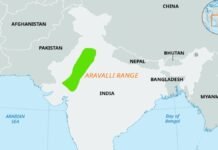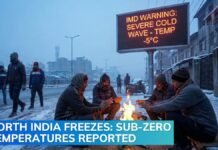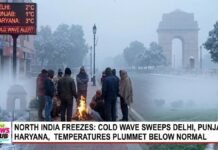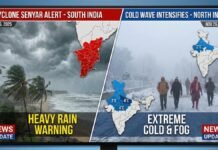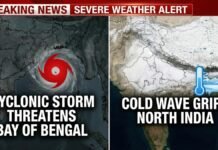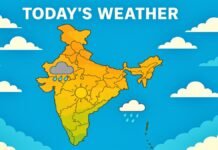
Key Points
- Severe heatwave sweeps across North India; temperatures soar above 45°C in multiple states.
- Delhi, Rajasthan, Punjab, and even hill stations in Himachal and Jammu report record highs.
- Delhi issues red alert, Amritsar breaks all-time record at 47°C, Sri Ganganagar in Rajasthan touches 48°C.
- Government and meteorological agencies urge people to avoid going outdoors during peak hours.
- No immediate relief expected; heatwave likely to persist for several more days.
New Delhi: North India is in the grip of an unprecedented heatwave, with temperatures crossing the 45°C mark in several states, making daily life nearly unbearable for millions. The India Meteorological Department (IMD) has issued red alerts across the region, warning of continued extreme heat in the coming days.
Delhi Scorches Under Red Alert
The national capital, Delhi, is experiencing its worst heatwave in recent memory. On Thursday, temperatures soared past 45°C, with the IMD warning that relief is unlikely for at least two more days. The Delhi government has issued a red alert, urging residents to venture outdoors only for essential tasks. Hospitals have reported a rise in cases of heatstroke and dehydration, and schools have shifted classes online or declared early summer vacations.
Punjab: Amritsar Breaks All-Time Heat Record
Punjab is also facing the brunt of the heatwave. Amritsar shattered its previous temperature records, hitting a staggering 47°C. Other districts in Punjab are reporting temperatures well above 45°C, prompting local authorities to issue advisories and set up emergency cooling centers. Public health officials are distributing water and oral rehydration solutions in vulnerable communities.
Rajasthan: Mercury Hits 48°C in Sri Ganganagar
Rajasthan, known for its harsh summers, has witnessed some of the highest temperatures in the country. Sri Ganganagar recorded a blistering 48°C, while Barmer, Churu, and Jaisalmer are all hovering around 45°C. The relentless sun is causing water sources to dry up rapidly, impacting both urban and rural populations. Local markets remain deserted during the day, and many businesses have reduced working hours to protect employees.
Hill Stations No Longer Cool Havens
Even traditionally cooler regions are not spared. Hill stations in Himachal Pradesh, such as Kullu, have seen temperatures soar to 38°C—an unusual high for the region. In Jammu, the mercury has reached 44°C, making outdoor work hazardous. Tourists hoping for respite in the hills are facing disappointment, as hotels struggle to cope with the increased demand for air conditioning and water.
Daily Life Disrupted, No Relief Indoors or Out
The extreme heat has forced people to stay indoors, but even at home, relief is elusive. Power cuts and humidity have rendered fans and coolers ineffective. Many families are spending afternoons in silence, with markets and public spaces deserted. The IMD has advised people to stay hydrated, avoid strenuous activity during peak hours, and check on vulnerable neighbors.
Meteorological Outlook: Heatwave to Continue
Meteorologists warn that the heatwave is likely to persist for at least the next 3–4 days, with only a slight chance of relief from isolated thunderstorms in some areas. The IMD has urged state governments to prepare for possible health emergencies and water shortages.
Safety Tips During Extreme Heat
- Stay Indoors: Avoid going out between 11 AM and 4 PM.
- Hydrate: Drink plenty of water, even if you’re not thirsty.
- Wear Light Clothing: Opt for loose, light-colored clothes.
- Check on Vulnerable People: Elderly, children, and those with health issues are at higher risk.
- Use Wet Cloths: Applying wet cloths or taking cool showers can help lower body temperature.
With the heatwave showing no signs of abating, North India is bracing for more challenging days ahead. Residents are urged to follow official advisories and prioritize health and safety until the weather turns.













